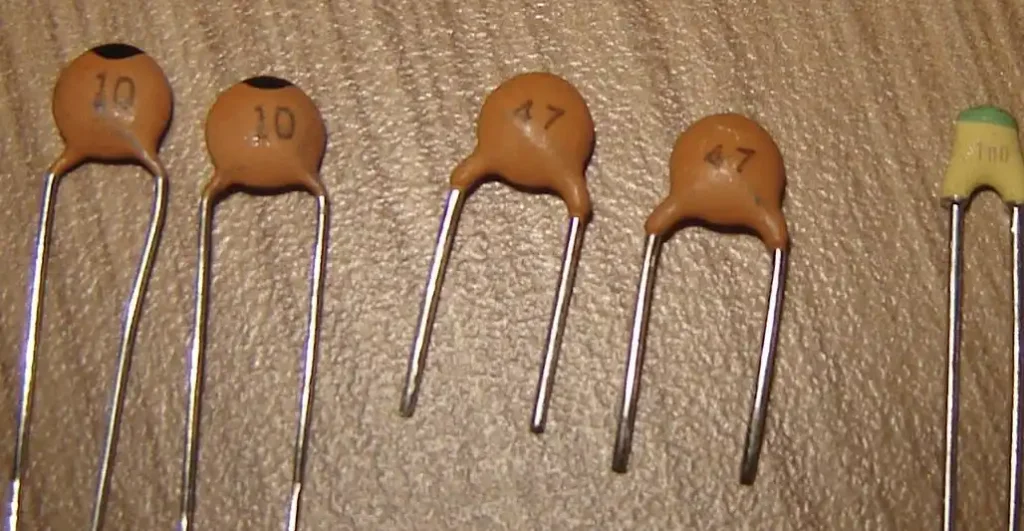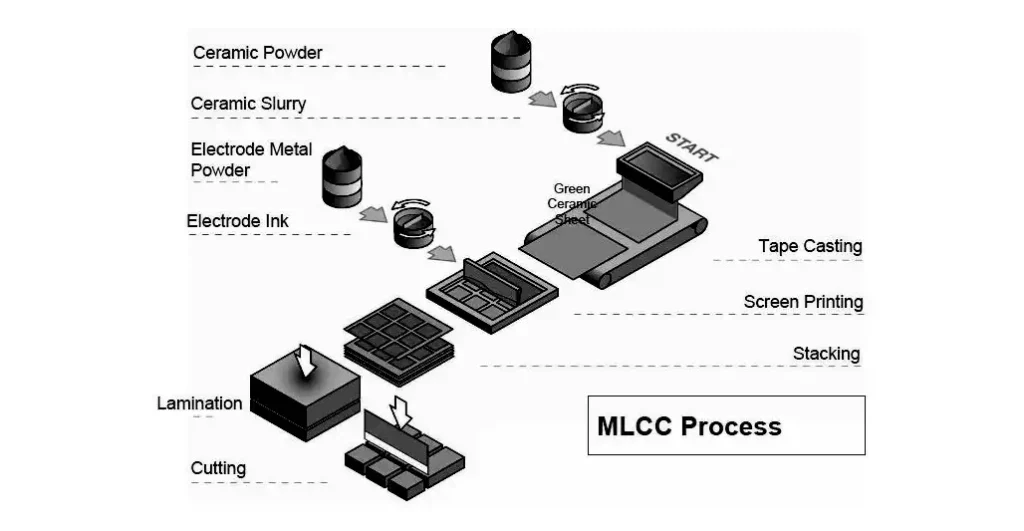Ceramic capacitors, ubiquitous in modern electronics, are essential components relied upon for their efficiency and versatility. Understanding their manufacturing process unveils the intricate steps involved in crafting these small yet vital devices.
In this blog, we embark on a journey through the various stages of ceramic capacitor manufacturing, exploring the materials, processes, and techniques involved in transforming simple ceramic powders and metal electrodes into the sophisticated components that power our modern world.
What Are Ceramic Capacitors

Ceramic capacitors are electronic components used to store and release electrical energy in circuits. They consist of a ceramic dielectric material sandwiched between metal electrodes. The dielectric material’s high permittivity allows for high capacitance values in a compact size.
Ceramic capacitors are widely used due to their reliability, stability, low cost, and suitability for various applications, including filtering, decoupling, timing, and coupling in electronic circuits. They come in different types, such as multilayer ceramic capacitors (MLCCs) and ceramic disc capacitors, each with specific advantages and limitations.
What Are Ceramic Capacitors Made Of
Ceramic capacitors are primarily made of two main components: a ceramic dielectric material and metal electrodes.
Ceramic Dielectric Material:
The dielectric material in ceramic capacitors is typically made from ceramic powders, often based on compounds like barium titanate (BaTiO3) or other ferroelectric materials. These ceramic materials exhibit high permittivity, which allows for high capacitance values in a small volume. Different formulations of ceramic powders can yield capacitors with varying characteristics such as temperature stability, voltage rating, and dielectric constant.
Metal Electrodes:
The metal electrodes in ceramic capacitors are usually made of highly conductive metals such as silver (Ag) or palladium (Pd). These electrodes are applied to the surface of the ceramic dielectric material in a layered structure. The metal electrodes serve as the plates of the capacitor, with the dielectric material between them determining the capacitance value.
In addition to these primary components, ceramic capacitors may also contain other materials such as binder materials and additives used during the manufacturing process. These additional materials help in shaping, bonding, and processing the ceramic and metal components to produce capacitors with desired electrical properties.
Ceramic capacitors are known for their reliability, stability, and wide range of capacitance values, making them essential components in various electronic circuits and devices.
How Are Ceramic Capacitors Made

Ceramic capacitors are electronic components widely used in various circuits due to their reliability, stability, and low cost. They are made through a series of manufacturing processes involving specialized materials and techniques. Here’s a detailed overview of how ceramic capacitors are typically made:
Selection of Raw Materials:
The manufacturing process begins with the selection of raw materials. The key materials used in ceramic capacitors include ceramic powder (usually based on barium titanate or other ferroelectric materials), metal electrodes (often made of silver or palladium), and a binder material.
Formulation of Ceramic Slurry:
The ceramic powder is mixed with a binder material to form a slurry. The binder material helps in shaping and binding the ceramic particles together during the subsequent processing steps. The composition and properties of the slurry are carefully controlled to achieve the desired capacitor characteristics.
Printing of Electrodes:
The slurry is then used to coat a substrate, typically made of ceramic or a similar material. Using a printing process, metal electrodes are applied to the substrate. These electrodes serve as the plates of the capacitor and are usually made of a high-conductivity material like silver or palladium.
Layering and Stacking:
Multiple layers of the coated substrate are stacked together to increase the capacitance of the capacitor. Each layer consists of alternating layers of ceramic and metal electrodes. The number of layers and the thickness of the dielectric (ceramic) layers determine the capacitance of the capacitor.
Compression and Shaping:
The stacked layers are compressed together under high pressure to remove excess binder material and ensure good adhesion between the layers. The compressed stack is then shaped into the desired form, such as a rectangular or disc-shaped capacitor.
Sintering:
The shaped capacitor body undergoes a sintering process in a high-temperature kiln. During sintering, the ceramic particles fuse together, and the binder material is burned off, leaving behind a solid ceramic structure with metal electrodes embedded within.
Metallization:
After sintering, the capacitor may undergo metallization, where additional metal layers are deposited on the electrodes to provide electrical connections. This step enhances the conductivity and solderability of the capacitor terminations.
Testing and Quality Control:
The finished capacitors undergo rigorous testing to ensure they meet the specified electrical parameters, such as capacitance, voltage rating, and leakage current. Quality control measures are implemented throughout the manufacturing process to maintain consistency and reliability.
Packaging:
Once tested and approved, the capacitors are packaged in suitable enclosures, such as ceramic or plastic housings, to protect them from external environmental factors and facilitate integration into electronic circuits.
The manufacturing process of ceramic capacitors involves a combination of materials science, precision engineering, and quality control to produce reliable electronic components suitable for a wide range of applications.
Conclusion
As we conclude our exploration into the manufacturing process of ceramic capacitors, it becomes evident that these seemingly small components are the result of meticulous craftsmanship and advanced engineering techniques. From the selection of raw materials to the final quality control checks, each step in the production journey contributes to the reliability, stability, and performance of ceramic capacitors.
By gaining insights into how ceramic capacitors are made, we not only deepen our appreciation for the intricate processes involved but also gain a better understanding of the crucial role they play in powering the devices that shape our daily lives. Whether in consumer electronics, automotive systems, or industrial machinery, ceramic capacitors continue to be indispensable components, driving innovation and progress in the world of electronics.
As technology continues to advance, the demand for smaller, more efficient, and higher-performing ceramic capacitors will only continue to grow. By recognizing the ingenuity and expertise behind their production, we can truly appreciate the remarkable capabilities of these essential components and the profound impact they have on the modern world.